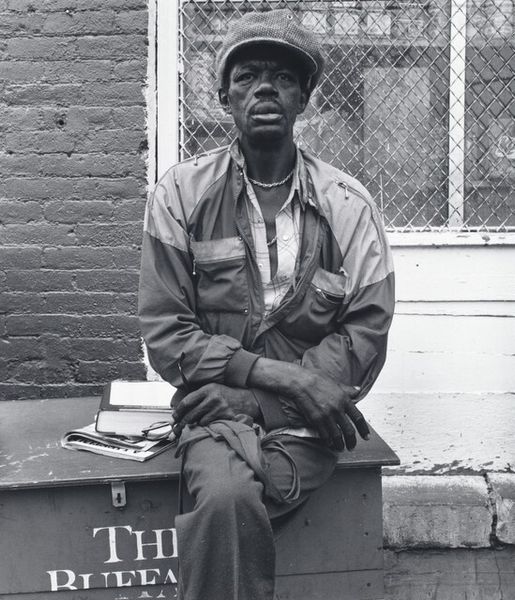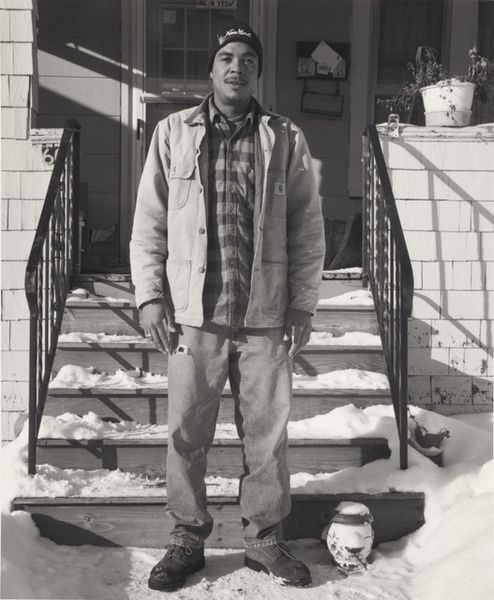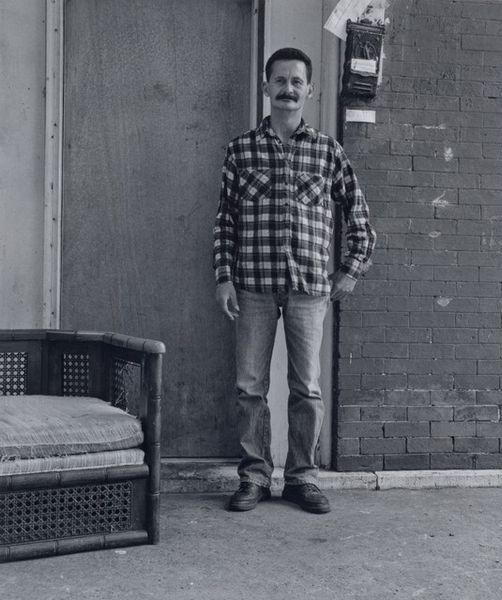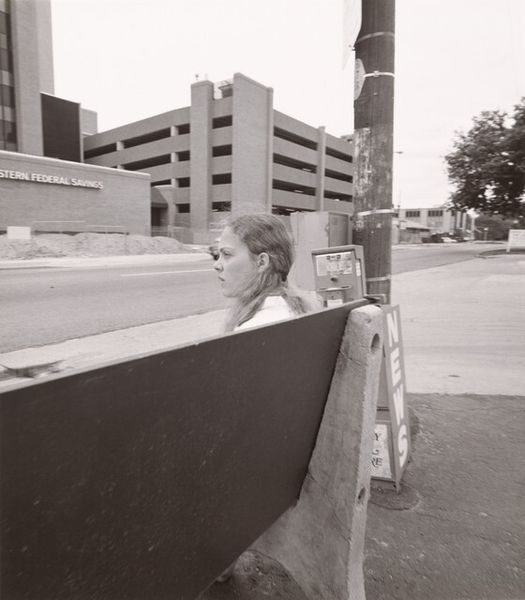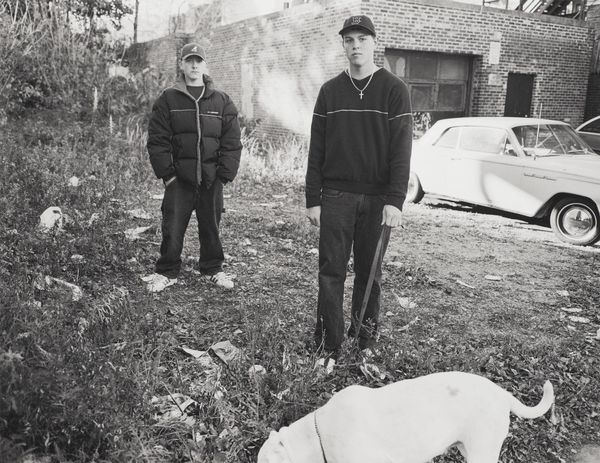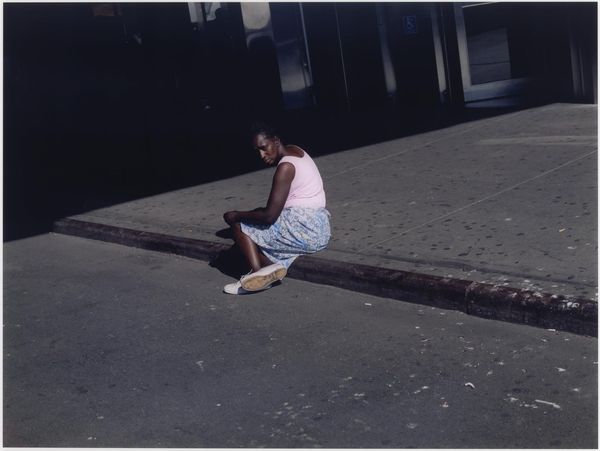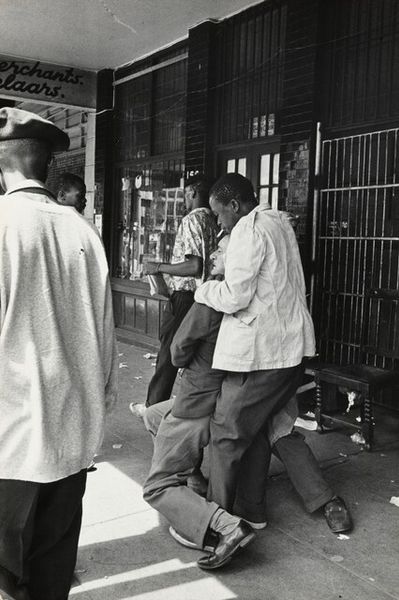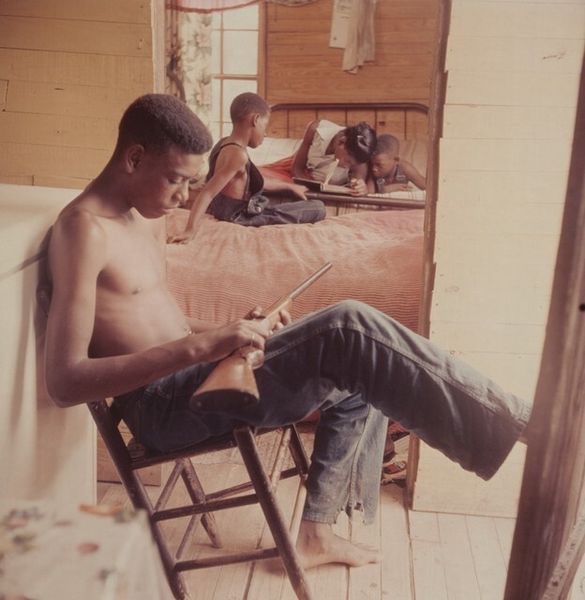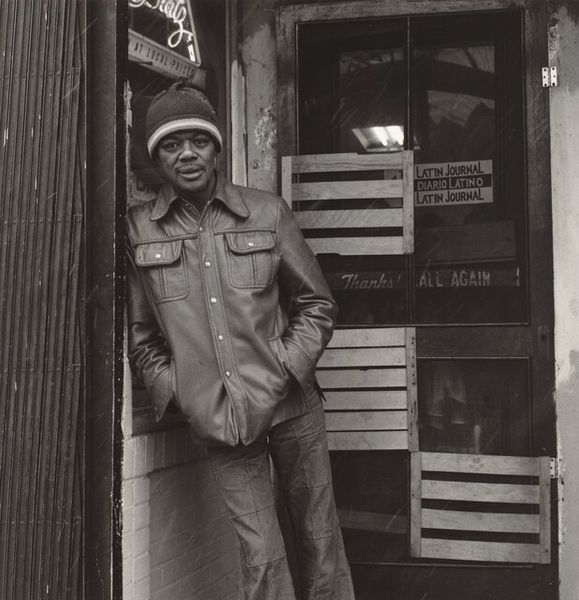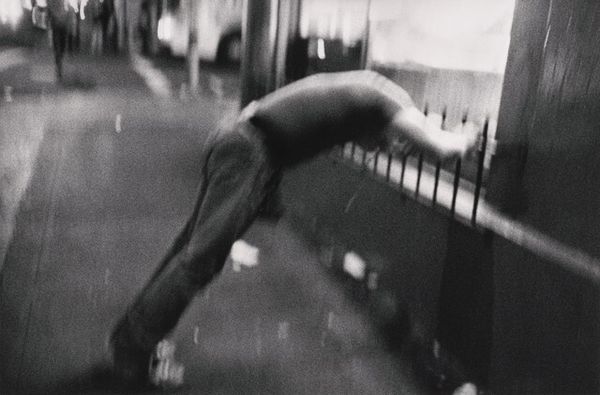
photography, gelatin-silver-print
#
portrait
#
black and white photography
#
landscape
#
social-realism
#
archive photography
#
photography
#
historical photography
#
black and white
#
gelatin-silver-print
#
monochrome
#
realism
Dimensions: image: 17.9 x 16.5 cm (7 1/16 x 6 1/2 in.) sheet: 25.2 x 20.2 cm (9 15/16 x 7 15/16 in.)
Copyright: National Gallery of Art: CC0 1.0
Editor: This gelatin silver print, "Jackie (Lower West Side series)" by Milton Rogovin, was created in 1986. There's a certain starkness to the composition – it feels very direct. What do you see in this piece? Curator: I see a powerful document of social reality, reflecting Rogovin's commitment to representing marginalized communities. This image invites us to consider the individual within a larger socio-economic framework. Look at the setting – a simple concrete table, the aging brick wall. What does that tell you? Editor: It feels very…unadorned. Almost like a stage set. It doesn't feel staged but it certainly feels deliberate in how much is in view but not necessarily prominent. Curator: Exactly. It's a carefully considered scene reflecting a reality that is often unseen. Jackie's gaze, the tattoos, the cane - they hint at stories of hardship, resilience, and perhaps defiance. How does this challenge mainstream portraiture? Editor: Well, portraiture is often about idealization, presenting a certain image. This feels…raw. Like it wants to present Jackie without varnish, without the need to impress anyone, confronting realities of aging and social struggles head-on. The way the image is in monochrome amplifies those struggles in a simple and profound presentation, as opposed to glorifying them. Curator: Precisely. Rogovin gives us a space to truly *see* Jackie, and reflect on the systems that create the very margins he inhabits. Does that make you think differently about documentary photography? Editor: Absolutely. I had viewed social documentary work more passively, and seeing this made me realize there are greater depths that reflect and invite further examination into these complex relationships between identity, environment, and social forces. Curator: And it pushes us to confront our own position as viewers and consider the power dynamics inherent in the act of looking. This challenges us.
Comments
No comments
Be the first to comment and join the conversation on the ultimate creative platform.

